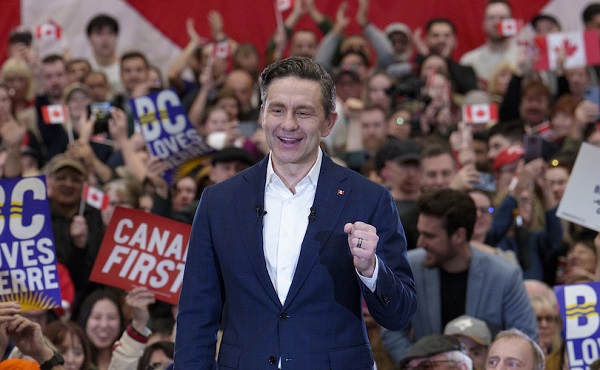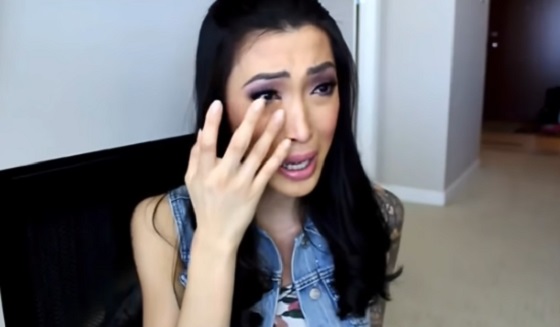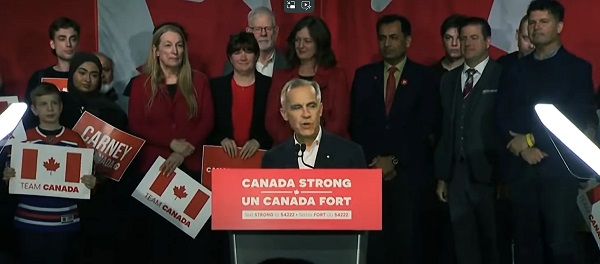Business
Tips From Tundra – Optimize Your Resume For ‘The New Normal’

The landscape of employment for job-seekers has changed dramatically since the beginning of the pandemic in Alberta. As of May 2020, the Alberta Government reports an unemployment rate of 15.5%. Combine that with experienced employees furloughed from various sectors, new graduates and those seeking a new career direction may have a steeper hill to climb than before. We continue to discover what is the new normal for Alberta post-pandemic, we revisit the topic of how to put your best foot forward when optimizing your resume for your job hunt.

Tundra Technical Solutions is a global recruitment agency headquartered in Toronto, Ontario. Since 2004, Tundra has grown quickly, today operating offices across North America, Europe and Asia. They work with top global partners actively seeking the best talent in multiple sectors such as finance, insurance, healthcare, technology, retail, energy, utilities, construction, mining, telecommunications, transportation and government to name a few.
Ever considered utilizing the skills a recruitment agency may have to offer? It may be the right time considering the volume of applicants in the hundreds on certain job postings, as shown in the image below. We spoke with Christina Esposito, Marketing and Communications Lead and Internal Recruiter for Tundra Technical Solutions on ways to optimize your resume for recruiters in the new normal.

(Source: LinkedIn Job Search)
Should your resume be written chronologically or functionally?
The key difference here is whether or not your work experience should be written as a timeline of your previous positions or should it be laid out in the form of what experience you feel is best suited for the position you are applying for. From a recruiters perspective, Christina mentions:
“We like to see a reverse chronological order of previous work experience. We recommend placing all of your technical skills right at the top of your resume, and then go into your most recent experience.”

Should you tailor your resume for the specific job you are applying for?
Say you are actively applying to open positions, tailoring your resume can be a time consuming task if your objective is to apply to the first 10-20 open positions you find. To that point, applying to everything you see can be detrimental to your efforts when utilizing a recruiter. Keep in mind, there is a human processing your candidate profile, and their efforts are to find the best talent for their employers. Christina offers a recommendation that can mitigate time for both the job seeker and recruiter:
“ we absolutely want to see someone tailoring their resume that matches the job description. A good tip for someone who might not want to go through a whole overhaul, is to first make sure that the job you’re applying to is relevant to your experience, recruiters can see if you’re applying to the first jobs that pop up for example. It becomes clear they haven’t really looked into the position they’re applying for. So, a lot of care and detail should go into those applications if you want to have the greatest success. Ultimately you want to make sure that the job description lines up with your skills…”

What is the best resume format that can be read autonomously through recruitment software?
As mentioned above, some positions can receive hundreds of applications. If you haven’t been made aware by now, recruiters utilise software called an Applicant Tracking System (ATS) or what is referred to as resume parsing, which allows the hundreds of resumes to be read and processed, thus creating a candidate profile highlighting the most relevant information to send to an employer. Say you spent endless hours on the most aesthetically pleasing resume to give that ‘wow’ factor, that may have been a solid practice in the past, but ATS systems have difficulty processing these resume formats, thus your candidate profiles could be lacking important information.
“I would recommend against a PDF format. The reason being is that Microsoft Word documents are the most legible and easiest to parse with. The way the ATS works is, someone sends in the application, the ATS picks those keywords from their resume and matches them to the actual job description. Inserting images or a lot of text can make it difficult for recruiters to look up your profile in the future.”
What should NOT be included on your resume?
Some of these you may already know, but let’s be clear, having a resume with only relevant information is your best chance of success. Working as a retail store manager I had received countless resumes from individuals seeking employment. During that time, I had encountered some of the most outrageous and creative resumes from all walks of life. By no means am I a recruitment specialist, but sticking to the basics was a winner for my new hires during that time. Christina offers the perspective of a recruiter for what not to put on your resume:
“Jumping right into things like objectives or hobbies is fine, but we would recommend against it because the longer you make your resume, you can decrease the chances of someone reading the full document. Best practice is to always keep your resume one to two pages with only relevant information. For industry veterans that have lengthy work history, you should only list the most recent and relevant experience.”
Should you include links to your social media?
Social media plays a significant role in the recruitment process for both agencies and hiring managers. LinkedIn has become a major part of what we call this ‘new normal’, with more than 20 million companies listed on the site and 14 million open jobs, it’s no surprise that over 75% of people who recently changed jobs used LinkedIn to inform their career decision. When it comes to social media, Christina offers her recommendations:
“90% of the time, recruiters are looking at your LinkedIn or Twitter. We want to make sure we get a holistic view of the applicant. 40% of our hires last year were candidates we sourced directly from LinkedIn. We have situations where we have candidates that look great on paper, but after we do some investigating. He/she doesn’t actually prove to be the person he/she was saying on paper. It’s a point of validation and puts a face to a name. My recommendation would be to keep your social media profiles clean, descriptive and showcase your accomplishments, especially if you have a public profile.”
This information should offer you some insight into how the employment landscape is changing and what best practices to implement for your job hunt. Who wouldn’t want to save time and effort on what can be an arduous task?

If you would like to learn more about Tundra Technical Solutions, speak to one of their experienced recruiters or to view their available positions in Alberta, check out their website here or message them on their Facebook below.
For more stories, visit Todayville Calgary
2025 Federal Election
MEI-Ipsos poll: 56 per cent of Canadians support increasing access to non-governmental healthcare providers

-
Most believe private providers can deliver services faster than government-run hospitals
-
77 per cent of Canadians say their provincial healthcare system is too bureaucratic
Canadians are increasingly in favour of breaking the government monopoly over health care by opening the door to independent providers and cross-border treatments, an MEI-Ipsos poll has revealed.
“Canadians from coast to coast are signalling they want to see more involvement from independent health providers in our health system,” explains Emmanuelle B. Faubert, economist at the MEI. “They understand that universal access doesn’t mean government-run, and that consistent failures to deliver timely care in government hospitals are a feature of the current system.”
Support for independent health care is on the rise, with 56 per cent of respondents in favour of allowing patients to access services provided by independent health entrepreneurs. Only 25 per cent oppose this.
In Quebec, support is especially strong, with 68 per cent endorsing this change.
Favourable views of accessing care through a mixed system are widespread, with three quarters of respondents stating that private entrepreneurs can deliver healthcare services faster than hospitals managed by the government. This is up four percentage points from last year.
Countries like Sweden and France combine universal coverage with independent providers and deliver faster, more accessible care. When informed about how these health systems run, nearly two in three Canadians favour adopting such models.
The poll also finds that 73 per cent of Canadians support allowing patients to receive treatment abroad with provincial coverage, which could help reduce long wait times at home.
Common in the European Union, this “cross-border directive” enabled 450,000 patients to access elective surgeries in 2022, with costs reimbursed as if they had been treated in their home country.
There’s a growing consensus that provincial healthcare systems are overly bureaucratic, with the strongest agreement in Alberta, B.C., and Quebec. The proportion of Canadians holding this view has risen by 16 percentage points since 2020.
Nor do Canadians see more spending as being a solution: over half say the current pace of healthcare spending in their province is unsustainable.
“Governments shouldn’t keep doubling down on what isn’t working. Instead, they should look at what works abroad,” says Ms. Faubert. “Canadians have made it clear they want to shift gears; now it’s up to policymakers to show they’re listening.”
A sample of 1,164 Canadians aged 18 and older was polled between March 24th and March 28th, 2025. The margin of error is ±3.3 percentage points, 19 times out of 20.
The results of the MEI-Ipsos poll are available here.
* * *
The MEI is an independent public policy think tank with offices in Montreal, Ottawa, and Calgary. Through its publications, media appearances, and advisory services to policymakers, the MEI stimulates public policy debate and reforms based on sound economics and entrepreneurship.
Education
Schools should focus on falling math and reading skills—not environmental activism

From the Fraser Institute
In 2019 Toronto District School Board (TDSB) trustees passed a “climate emergency” resolution and promised to develop a climate action plan. Not only does the TDSB now have an entire department in their central office focused on this goal, but it also publishes an annual climate action report.
Imagine you were to ask a random group of Canadian parents to describe the primary mission of schools. Most parents would say something along the lines of ensuring that all students learn basic academic skills such as reading, writing and mathematics.
Fewer parents are likely to say that schools should focus on reducing their environmental footprints, push students to engage in environmental activism, or lobby for Canada to meet the 2016 Paris Agreement’s emission-reduction targets.
And yet, plenty of school boards across Canada are doing exactly that. For example, the Seven Oaks School Division in Winnipeg is currently conducting a comprehensive audit of its environmental footprint and intends to develop a climate action plan to reduce its footprint. Not only does Seven Oaks have a senior administrator assigned to this responsibility, but each of its 28 schools has a designated climate action leader.
Other school boards have gone even further. In 2019 Toronto District School Board (TDSB) trustees passed a “climate emergency” resolution and promised to develop a climate action plan. Not only does the TDSB now have an entire department in their central office focused on this goal, but it also publishes an annual climate action report. The most recent report is 58 pages long and covers everything from promoting electric school buses to encouraging schools to gain EcoSchools certification.
Not to be outdone, the Vancouver School District (VSD) recently published its Environmental Sustainability Plan, which highlights the many green initiatives in its schools. This plan states that the VSD should be the “greenest, most sustainable school district in North America.”
Some trustees want to go even further. Earlier this year, the British Columbia School Trustees Association released its Climate Action Working Group report that calls on all B.C. school districts to “prioritize climate change mitigation and adopt sustainable, impactful strategies.” It also says that taking climate action must be a “core part” of school board governance in every one of these districts.
Apparently, many trustees and school board administrators think that engaging in climate action is more important than providing students with a solid academic education. This is an unfortunate example of misplaced priorities.
There’s an old saying that when everything is a priority, nothing is a priority. Organizations have finite resources and can only do a limited number of things. When schools focus on carbon footprint audits, climate action plans and EcoSchools certification, they invariably spend less time on the nuts and bolts of academic instruction.
This might be less of a concern if the academic basics were already understood by students. But they aren’t. According to the most recent data from the Programme for International Student Assessment (PISA), the math skills of Ontario students declined by the equivalent of nearly two grade levels over the last 20 years while reading skills went down by about half a grade level. The downward trajectory was even sharper in B.C., with a more than two grade level decline in math skills and a full grade level decline in reading skills.
If any school board wants to declare an emergency, it should declare an academic emergency and then take concrete steps to rectify it. The core mandate of school boards must be the education of their students.
For starters, school boards should promote instructional methods that improve student academic achievement. This includes using phonics to teach reading, requiring all students to memorize basic math facts such as the times table, and encouraging teachers to immerse students in a knowledge-rich learning environment.
School boards should also crack down on student violence and enforce strict behaviour codes. Instead of kicking police officers out of schools for ideological reasons, school boards should establish productive partnerships with the police. No significant learning will take place in a school where students and teachers are unsafe.
Obviously, there’s nothing wrong with school boards ensuring that their buildings are energy efficient or teachers encouraging students to take care of the environment. The problem arises when trustees, administrators and teachers lose sight of their primary mission. In the end, schools should focus on academics, not environmental activism.
-

 2025 Federal Election22 hours ago
2025 Federal Election22 hours agoMEI-Ipsos poll: 56 per cent of Canadians support increasing access to non-governmental healthcare providers
-

 2025 Federal Election14 hours ago
2025 Federal Election14 hours agoRCMP Whistleblowers Accuse Members of Mark Carney’s Inner Circle of Security Breaches and Surveillance
-

 2025 Federal Election1 day ago
2025 Federal Election1 day agoAI-Driven Election Interference from China, Russia, and Iran Expected, Canadian Security Officials Warn
-

 2025 Federal Election1 day ago
2025 Federal Election1 day agoEuthanasia is out of control in Canada, but nobody is talking about it on the campaign trail
-

 Health23 hours ago
Health23 hours agoTrump admin directs NIH to study ‘regret and detransition’ after chemical, surgical gender transitioning
-

 illegal immigration2 days ago
illegal immigration2 days agoDespite court rulings, the Trump Administration shows no interest in helping Abrego Garcia return to the U.S.
-

 COVID-192 days ago
COVID-192 days agoCOVID virus, vaccines are driving explosion in cancer, billionaire scientist tells Tucker Carlson
-

 2025 Federal Election2 days ago
2025 Federal Election2 days agoConservative MP Leslyn Lewis warns Canadian voters of Liberal plan to penalize religious charities








